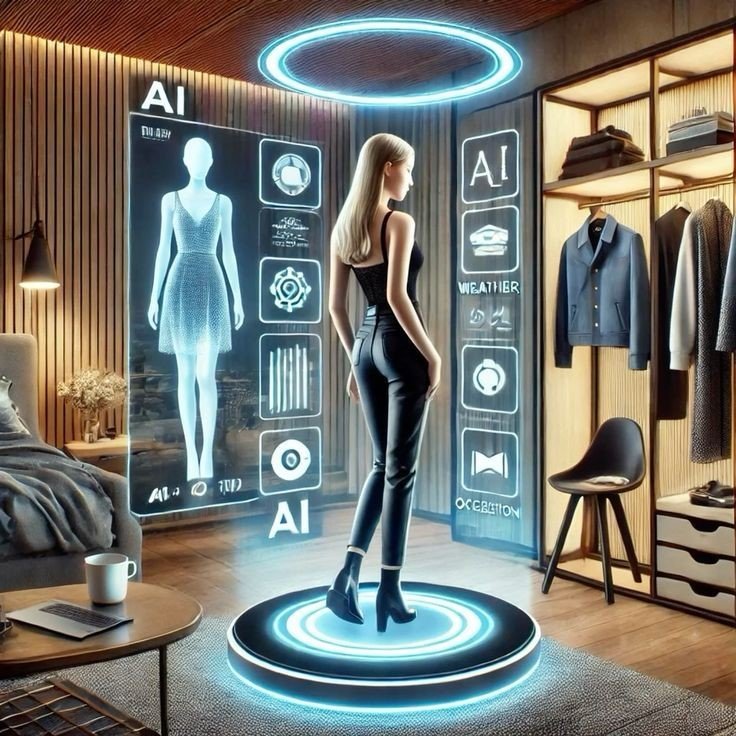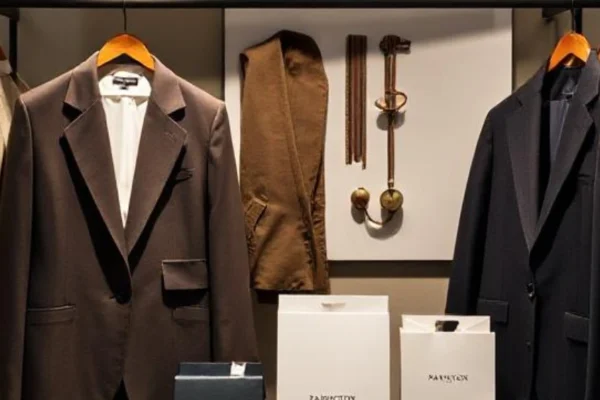Fashion’s Digital Revolution
Fashion is changing. Fast.
The industry that once relied on fabric and thread is now embracing pixels and code. Digital fashion is here. And it’s transforming everything we know about style.
Virtual clothing exists without physical materials. AI creates designs in seconds. Digital models walk virtual runways. Fashion shows happen in metaverses.
This isn’t just a trend. It’s a complete industry transformation.
The intersection of technology and style is creating possibilities that seemed impossible just years ago. Fashion brands are racing to adapt. Consumers are embracing new ways to express themselves.
Welcome to the digital fashion revolution.
What Is Digital Fashion?
Digital fashion means clothing that exists only in digital form. No fabric. No manufacturing. No physical limitations.
It includes:
- Virtual garments for avatars and social media
- AI-generated fashion designs
- 3D clothing models for online shopping
- Digital fashion shows and presentations
- Augmented reality try-on experiences
But digital fashion goes beyond virtual clothes. It’s about reimagining the entire fashion ecosystem using technology.
Think of it as fashion without boundaries. Where creativity meets computation. Where style transcends physical limitations.
Virtual Clothing Revolution
Virtual clothing is exploding in popularity. People buy digital outfits for their online personas. Social media influencers wear virtual designer pieces. Gamers customize avatars with luxury digital fashion.
The Fabricant created the first digital couture dress sold at auction. It went for $9,500. The buyer couldn’t wear it physically. But they owned a unique digital fashion piece.
Why do people buy virtual clothes?
Self-Expression Online
Digital natives spend hours online daily. Their virtual appearance matters as much as their physical one. Maybe more.
Virtual clothing lets people:
- Express personality through avatars
- Wear expensive designer pieces affordably
- Experiment with bold styles risk-free
- Stand out in virtual environments
Sustainability Benefits
Traditional fashion has a massive environmental impact. Digital fashion offers an alternative.
Virtual clothes require no:
- Raw materials
- Manufacturing processes
- Transportation
- Physical storage
- Waste disposal
One digital garment can be worn by millions without additional environmental cost.
Accessibility and Inclusivity
Digital fashion removes many barriers:
- Size limitations don’t exist
- Physical disabilities don’t restrict choices
- Geographic location doesn’t matter
- Economic barriers are reduced
Anyone can wear anything in the digital world.
AI-Driven Design Processes
Artificial intelligence is revolutionizing fashion design. AI systems create new designs, predict trends, and optimize production processes.
Generative Design
AI can generate thousands of design variations instantly. Designers input parameters like:
- Color preferences
- Style directions
- Cultural influences
- Seasonal themes
The AI creates countless options. Designers select the best concepts to develop further.
Stitch Fix uses AI to design clothing based on customer data. The system analyzes preferences, body types, and style choices to create personalized fashion pieces.

Trend Prediction
AI analyzes massive amounts of data to predict fashion trends:
- Social media posts
- Street style photography
- Celebrity appearances
- Runway shows
- Consumer behavior patterns
This helps brands stay ahead of trends. They can create collections that match future consumer desires.
Heuritech uses computer vision to analyze millions of images. Their AI predicts which styles will become popular months in advance.
Pattern Recognition
AI identifies successful design patterns across fashion history. It recognizes:
- Color combinations that work well
- Silhouettes that flatter different body types
- Style elements that create emotional responses
- Cultural symbols that resonate with audiences
This knowledge helps designers create more successful collections.
Virtual Fashion Shows and Presentations
Fashion weeks are going digital. COVID-19 accelerated this trend, but the benefits are keeping it alive.
Metaverse Runways
Fashion brands host shows in virtual worlds. Audiences attend as avatars. Models showcase digital collections on impossible runways.
Balenciaga created a virtual fashion show in the video game Fortnite. Players could purchase digital versions of the showcased outfits for their characters.
Benefits of virtual fashion shows:
- Global accessibility without travel
- Unlimited creative possibilities
- Lower production costs
- Environmental sustainability
- Interactive audience experiences
Augmented Reality Experiences
AR fashion shows blend physical and digital elements. Audiences see real models wearing virtual clothing overlaid through their devices.
Burberry created AR experiences where customers could see virtual accessories on real models through their smartphone cameras.
Digital Fashion Technology
Several technologies power the digital fashion revolution:
3D Modeling and Rendering
Advanced 3D software creates realistic virtual clothing. Every fabric texture, drape, and movement is simulated accurately.
CLO 3D and Marvelous Designer are industry-standard tools for creating digital fashion. They simulate how fabrics behave in real life.
Blockchain and NFTs
Non-fungible tokens (NFTs) prove ownership of digital fashion items. Blockchain technology ensures authenticity and scarcity.
RTFKT Studios creates digital sneakers as NFTs. Some sell for thousands of dollars. Owners can prove they have exclusive digital footwear.
Motion Capture
Motion capture technology records how real fabric moves. This data helps create more realistic virtual clothing animations.
Digital fashion pieces can move naturally on virtual models or avatars.
Computer Vision
AI systems analyze fashion images to understand style, color, and design elements. These powers:
- Automatic tagging systems
- Style recommendation engines
- Trend analysis tools
- Quality control processes
Major Players in Digital Fashion
Several companies are leading the digital fashion revolution:
The Fabricant
Pure digital fashion house. Creates virtual clothing exclusively. No physical production. Founded on sustainability principles.
Their designs exist only in digital form. They partner with brands to create virtual collections.
DressX
Digital fashion marketplace. Sells virtual clothing for social media photos. Customers upload photos and get them edited with digital outfits.
They’ve worked with major fashion brands to create digital versions of physical collections.
RTFKT Studios
Digital fashion and collectibles company. Creates virtual sneakers and accessories as NFTs. Acquired by Nike in 2021.
They’re bridging the gap between gaming, fashion, and digital ownership.
Tribute Brand
Digital fashion brand creating virtual clothing for the metaverse. Focuses on avant-garde designs impossible in physical form.
They explore fashion without physical constraints.
Impact on the Traditional Fashion Industry
Digital fashion is changing the entire industry:

Design Process Revolution
Traditional design involves:
- Sketching concepts
- Creating physical prototypes
- Testing on models
- Multiple iterations
- Expensive sampling
Digital design streamlines this:
- 3D modeling replaces physical prototypes
- Virtual fitting reduces sampling costs
- AI generates design variations
- Digital collaboration improves efficiency
Sustainable Production
Digital fashion addresses sustainability concerns:
- Reduced waste from unsold inventory
- Lower carbon footprint
- No water usage for production
- Elimination of harmful chemicals
- Reduced transportation needs
New Business Models
Digital fashion enables new revenue streams:
- Virtual clothing sales
- Digital fashion subscriptions
- AR try-on services
- Virtual personal styling
- Digital fashion rentals
Consumer Behavior Changes
Shoppers increasingly expect digital experiences:
- Virtual try-on before purchasing
- AR visualization of products
- Digital styling assistance
- Social media integration
- Personalized recommendations
Virtual Try-On Technology
AR and VR technologies let customers try clothes without physical contact:
Augmented Reality Fitting
Customers use smartphone cameras to see how clothes look on them. AI recognizes body shape and overlays virtual garments.
Zara and H&M offer AR try-on features in their apps. Customers can see how different sizes and colors look before ordering.

Virtual Reality Showrooms
VR creates immersive shopping experiences. Customers enter virtual stores, browse collections, and try on clothes using their avatars.
Tommy Hilfiger created VR showrooms where customers could explore collections in virtual environments.
Size Prediction AI
AI analyzes customer photos and data to predict the perfect sizes. This reduces returns and improves customer satisfaction.
True Fit uses machine learning to recommend sizes across different brands based on customer preferences and body measurements.
Metaverse Fashion
As metaverses grow, digital fashion becomes increasingly important:
Avatar Customization
People spend significant time customizing their virtual appearances. Digital fashion provides options for self-expression.
Games like Roblox and Fortnite sell millions of virtual fashion items. Players want unique looks for their avatars.
Virtual Identity
Digital fashion helps people create and maintain virtual identities. These identities can be extensions of real personalities or completely different personas.
Social Status
Just like physical fashion, digital fashion can signal status and taste. Rare or expensive virtual items become status symbols.
Virtual Events
As more events happen in virtual spaces, appropriate digital fashion becomes important. People want to look good at virtual parties, meetings, and gatherings.
AI Fashion Design Tools
Several AI tools are revolutionizing fashion design:
Adobe Sensei
Adobe’s AI platform helps fashion designers with:
- Automatic color palette generation
- Pattern recognition and creation
- Style trend analysis
- Design workflow optimization
Google’s AI Fashion
Google uses AI for:
- Style recommendations
- Visual search for fashion items
- Trend prediction
- Inventory optimization
IBM Watson Fashion
IBM’s AI helps with:
- Consumer preference analysis
- Supply chain optimization
- Demand forecasting
- Personalized styling
Challenges in Digital Fashion
Despite exciting opportunities, digital fashion faces several challenges:

Technical Limitations
Creating realistic digital clothing requires:
- Powerful computing resources
- Advanced software skills
- Sophisticated rendering capabilities
- Complex physics simulations
Consumer Adoption
Many consumers still prefer physical clothing. Digital fashion needs to:
- Demonstrate clear value
- Provide compelling experiences
- Address practical concerns
- Build trust and authenticity
Standardization Issues
The industry lacks standards for:
- Digital clothing formats
- Size measurements
- Quality metrics
- Platform compatibility
Intellectual Property
Digital fashion raises new IP questions:
- Who owns virtual designs?
- How are digital copies controlled?
- What constitutes fashion piracy online?
- How are creator rights protected?
The Future of Digital Fashion
What’s coming next in digital fashion?
Hyper-Realistic Simulations
Future technology will create indistinguishable virtual clothing. Every fabric detail, texture, and movement will look completely real.
AI Personal Stylists
AI will provide personalized fashion advice based on:
- Individual style preferences
- Body type and proportions
- Lifestyle and activities
- Budget constraints
- Cultural considerations
Seamless Physical-Digital Integration
The line between physical and digital fashion will blur. Clothes might have digital components. Physical garments could unlock virtual variations.
Sustainable Fashion Solutions
Digital fashion will help solve sustainability problems:
- Virtual sampling reduces waste
- AI optimizes production quantities
- Digital fashion satisfies style desires without environmental impact
- Circular fashion models become more viable
Mass Customization
AI will enable truly personalized fashion at scale. Every garment could be uniquely designed for individual customers based on their preferences, body measurements, and lifestyle needs.

Getting Started with Digital Fashion
Want to explore digital fashion? Here’s how:
For Consumers:
- Try AR fashion apps like Snapchat filters
- Explore virtual clothing on DressX
- Customize avatars in games and social platforms
- Follow digital fashion brands on social media
For Designers:
- Learn 3D fashion design software like CLO 3D
- Experiment with AI design tools
- Study digital fashion case studies
- Build a portfolio of virtual designs
For Brands:
- Partner with digital fashion companies
- Develop AR try-on experiences
- Create virtual collections
- Experiment with metaverse presence
Investment and Market Growth
The digital fashion market is growing rapidly:
Market Size
Industry analysts predict digital fashion will reach billions in value within the next decade. Investment in digital fashion startups is accelerating.
Major Investments
- Nike acquired RTFKT Studios for an undisclosed millions
- Luxury brands invest heavily in digital experiences
- Tech companies develop fashion-specific AI tools
- Venture capital flows into fashion technology startups
Revenue Streams
Digital fashion creates multiple revenue opportunities:
- Direct virtual clothing sales
- Licensing digital designs
- Technology platform subscriptions
- Consultation and implementation services
Education and Skills Development
The digital fashion revolution requires new skills:
Technical Skills Needed:
- 3D modeling and rendering
- AI and machine learning basics
- Virtual reality development
- Blockchain and NFT understanding
Design Skills Evolution:
- Traditional fashion design remains important
- Digital creativity becomes essential
- Understanding of virtual environments grows
- Cross-platform design thinking develops
Educational Programs
Fashion schools are adapting curricula to include digital fashion. New programs focus specifically on fashion technology and virtual design.
Conclusion
Digital fashion represents a fundamental shift in how we think about clothing and style. The intersection of technology and fashion is creating unprecedented opportunities for creativity, sustainability, and self-expression.
Virtual clothing eliminates physical limitations. AI accelerates design processes. Metaverses create new spaces for fashion expression. Augmented reality bridges physical and digital experiences.
The industry is transforming rapidly. Traditional fashion houses are embracing digital tools. Pure digital fashion brands are emerging. Consumers are discovering new ways to express themselves through virtual clothing.
This revolution addresses major industry challenges. Sustainability concerns find solutions in digital alternatives. Accessibility barriers fall in virtual environments. Creative possibilities expand beyond physical constraints.
The future of fashion is digital. Not exclusively, but significantly. Physical and digital fashion will coexist, complement each other, and create experiences we’re only beginning to imagine.
Technology continues advancing. AI becomes more sophisticated. Virtual worlds become more realistic. The possibilities keep expanding.
Ready to explore the future of fashion? Start experimenting with digital fashion today. Try virtual try-on apps. Follow digital fashion brands. Create your virtual style. The intersection of technology and fashion is reshaping everything, and you can be part of this exciting transformation.








